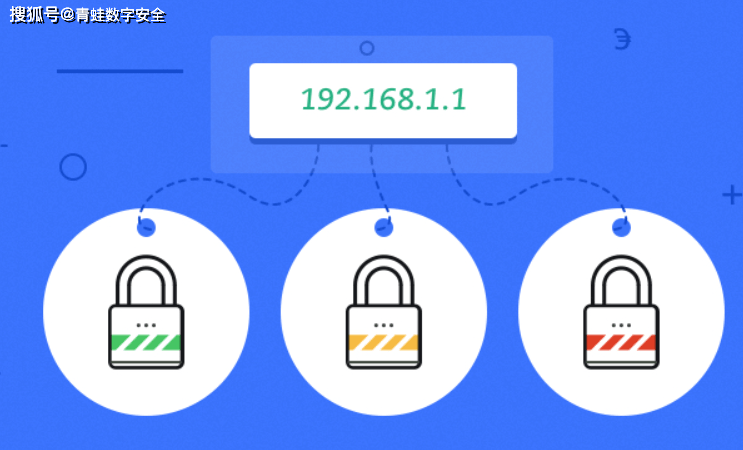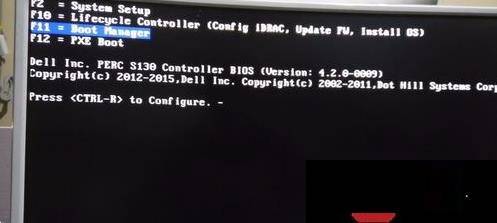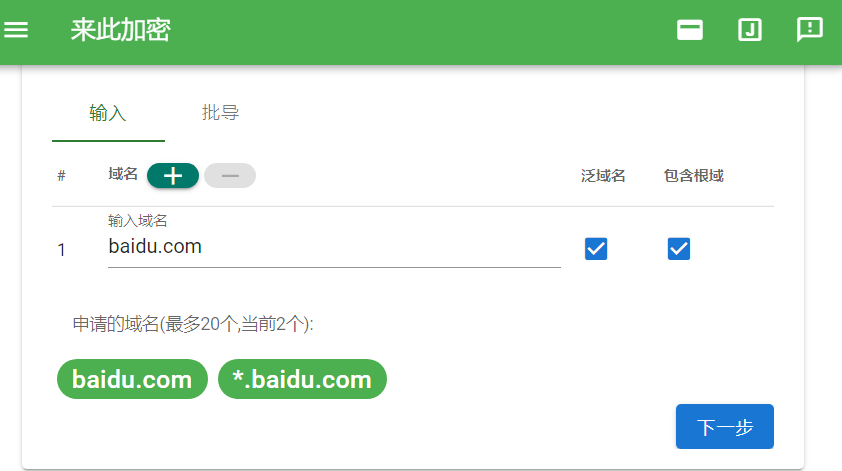Hive安装和使用
参考资料:
Hive学习(一) 安装 环境:CentOS 7 + Hadoop3.2 + Hive3.1 - 一个人、一座城 - 博客园
1.安装hive
1.1下载地址hive
镜像路径
http://www.Apache.org/dyn/closer.cgi/hive 或者 https://mirrors.bfsu.edu.cn/apache/hive/hive-3.1.2/
wget https://mirrors.bfsu.edu.cn/apache/hive/hive-3.1.2/apache-hive-3.1.2-bin.tar.gz .
1.2.解压到安装路径
tar -zxvf ./apache-hive-3.1.2-bin.tar.gz -C /usr/local
cd /usr/local
sudo mv apache-hive-3.1.2-bin hive
1.3.设置hive路径
vi ~/.bash_profile
export HIVE_HOME=/usr/local/hive
export HIVE_CONF_DIR=${HIVE_HOME}/conf
export PATH=$PATH:$HIVE_HOME/bin
source ~/.bash_profile
1.4.修改/usr/local/hive/conf下的hive-site.xml
cd /usr/local/hive/conf
mv hive-default.xml.template hive-default.xml
vim hive-site.xml
<configuration>
<property>
<name>JAVAx.jdo.option.ConnectionURL</name>
<value>jdbc:MySQL://localhost:3306/hive?createDatabaseIfNotExist=true&useSSL=false</value>
</property>
<property>
<name>javax.jdo.option.ConnectionDriverName</name>
<value>com.mysql.jdbc.Driver</value>
</property>
<property>
<name>javax.jdo.option.ConnectionUserName</name>
<value>hive</value>
</property>
<property>
<name>javax.jdo.option.ConnectionPassword</name>
<value>hiveMhxzKhl88!</value>
</property>
<!--hive工作的hdfs临时存储空间-->
<property>
<name>hive.exec.scratchdir</name>
<value>/tmp/hive</value>
</property>
<!--hive工作的本地临时存储空间-->
<property>
<name>hive.exec.local.scratchdir</name>
<value>/home/xxx/hive/tmp</value>
</property>
<!--如果启用了日志功能,则存储操作日志的顶级目录-->
<property>
<name>hive.server2.logging.operation.log.location</name>
<value>home/xxx/hive/tmp/operation_logs</value>
</property>
<!--Hive运行时结构化日志文件的位置-->
<property>
<name>hive.querylog.location</name>
<value>/home/xxx/hive/tmp</value>
</property>
<!--用于在远程文件系统中添加资源的临时本地目录-->
<property>
<name>hive.downloaded.resources.dir</name>
<value>/home/xxx/hive/tmp/${hive.session.id}_resources</value>
</property>
<property>
<name>hive.server2.authentication</name>
<value>NONE</value>
</property>
<property>
<name>dfs.permissions.enabled</name>
<value>false</value>
</property>
<property>
<name>hive.server2.enable.doAs</name>
<value>FALSE</value>
</property>
</configuration>
1.5 hive-env.sh
cp hive-env.sh.template hive-env.sh
#并编辑
export HIVE_CONF_DIR=${HIVE_HOME}/conf
export HIVE_AUX_JARS_PATH=${HIVE_HOME}/conf/lib
1.5 拷贝mysql驱动包
wget https://cdn.mysql.com//archives/mysql-connector-java-5.1/mysql-connector-java-5.1.46.zip
unzip mysql-connector-java-5.1.46.zip
cp mysql-connector-java-5.1.46-bin.jar ${HIVE_HOME}/conf/lib
2.安装mysql
2.1下载myql的版本
https://downloads.mysql.com/archives/community/
yum -y install mysql-community-server
Loaded plugins: fastestmirror, langpacks
Loading mirror speeds from cached hostfile
No package mysql-community-server available.
Error: Nothing to do
如果yum没办法安装,需要单独下载安装
mysql-community-release-el7-5.noarch.rpm
wget -i -c http://dev.mysql.com/get/mysql57-community-release-el7-10.noarch.rpm
rpm -ivh mysql57-community-release-el7-10.noarch.rpm
yum install mysql-serve
查询是否安装ok
rpm -qa|grep mysql
修改默认字符集
vi /etc/my.cnf
[client]
default-character-set=utf8
[mysql]
default-character-set=utf8
[mysqld]
collation-server = utf8_unicode_ci
init-connect='SET NAMES utf8'
character-set-server = utf8
systemctl restart mysqld.service
2.2 启动mysql服务
systemctl start mysqld.service
2.3 设置登录密码
查看临时密码
grep 'temporary password' /var/log/mysqld.log
2021-01-07T10:48:25.445856Z 1 [Note] A temporary password is generated for root@localhost: K:3q5rpb4+8R
试着用初始密码登录
mysql -p
Enter password:
设置初始密码
ALTER USER 'root'@'localhost' IDENTIFIED BY 'MhxzKhl88!'
2.4 新建hive数据库。
这个hive数据库与hive-site.xml中localhost:3306/hive的hive对应,用来保存hive元数据
mysql> create database hive;
. 配置mysql允许hive接入:
注意yourname是你当前的用户
mysql> grant all on *.* to hive@localhost identified by 'hiveMhxzKhl88!';
#将所有数据库的所有表的所有权限赋给hive用户,by后面的是配置hive-site.xml中配置的连接密码
mysql> flush privileges; #刷新mysql系统权限关系表
初始化数据库
schematool -dbType mysql -initSchema
如果没有初始化执行命令的时候会报错
FAILED: HiveException java.lang.RuntimeException: Unable to instantiate org.apache.hadoop.hive.ql.me
关于mysql的授权命令
use mysql;
#给某个用户授权
格式:grant 权限 on 数据库.* to 用户名@登录主机 identified by "密码";
grant all privileges on testDB.* to test@localhost identified by '1234';
#如果想指定部分权限给一用户,可以这样来写:
grant select,update on testDB.* to test@localhost identified by '1234';
#删除某个授权的用户
Delete FROM user Where User='test' and Host='localhost';
#修改密码
update mysql.user set password=password('新密码') where User="test" and Host="localhost";
3.hive sql入门
3.1 Hive基本数据类型
Hive支持基本数据类型和复杂类型, 基本数据类型主要有数值类型(INT、FLOAT、DOUBLE ) 、布尔型和字符串, 复杂类型有三种:ARRAY、MAP 和 STRUCT。
a.基本数据类型
- TINYINT: 1个字节
- SMALLINT: 2个字节
- INT: 4个字节
- BIGINT: 8个字节
- BOOLEAN: TRUE/FALSE
- FLOAT: 4个字节,单精度浮点型
- DOUBLE: 8个字节,双精度浮点型
- STRING 字符串
b.复杂数据类型
- ARRAY: 有序字段
- MAP: 无序字段
- STRUCT: 一组命名的字段
3.2 常用的HiveQL操作命令
3.2.1 库操作
create database if not exists testdb; #创建数据库
show databases; #查看Hive中包含数据库
show databases like 'h.*'; #查看Hive中以h开头数据库
describe databases; #查看hive数据库位置等信息
alter database testdb set dbproperties; #为hive设置键值对属性
use testdb; #切换到hive数据库下
drop database if exists testdb; #删除不含表的数据库
drop database if exists testdb cascade; #删除数据库和它中的表
3.2.2 表操作
1.创建表
CREATE [EXTERNAL] TABLE [IF NOT EXISTS] table_name
[(col_name data_type [COMMENT col_comment], ...)]
[COMMENT table_comment]
[PARTITIONED BY (col_name data_type [COMMENT col_comment], ...)]
[CLUSTERED BY (col_name, col_name, ...)
[SORTED BY (col_name [ASC|DESC], ...)] INTO num_buckets BUCKETS]
[ROW FORMAT row_format]
[STORED AS file_format]
[LOCATION hdfs_path]
- CREATE TABLE 创建一个指定名字的表。如果相同名字的表已经存在,则抛出异常;用户可以用 IF NOT EXIST 选项来忽略这个异常
- EXTERNAL 关键字可以让用户创建一个外部表,在建表的同时指定一个指向实际数据的路径(LOCATION)
- LIKE 允许用户复制现有的表结构,但是不复制数据
- COMMENT可以为表与字段增加描述
例如,建立一个usr表
create table if not exists testdb.usr(
uid string comment 'uid',
cuid string comment 'cuid',
type string comment 'type'
);
create table person(name STRING,age INT);
create table if not exists testdb.usr2(
id int,
name string,
address string
);
2.表查看
show tables in hive;
show tables 'u.*'; #查看hive中以u开头的表
describe hive.usr; #查看usr表相关信息
3.表修改
#重命名表
alter table usr rename to custom;
#修改列信息
alter table usr change column pwd password string after address;
#增加列
alter table usr add columns(hobby string);
#删除替换列
alter table usr replace columns(uname string);
drop table if exists usr1;
4.导入数据
建立表,设定分隔符是t
create table if not exists testdb.testhive(unique_id string,uid string,cuid string,create_time int)
row format delimited fields terminated by 't';
load data local inpath "/home/team/r.txt" overwrite into table testhive;
Hive中追加导入数据的4种方式
从本地导入: load data local inpath '/home/st.txt' (overwrite) into table student;
从Hdfs导入: load data inpath '
/user/hive/warehouse/st.txt' (overwrite) into table student;
查询导入: create table student_a as select * from student;(也可以具体查询某项数据)
查询结果导入: insert (overwrite)into table student select * from student_a;
5.导出数据
insert overwrite local directory '/usr/local/hadoop/tmp/stu' select id,name from stu;
3.2.3查询
和标注sql语法基本一致,例如查询一天的日活
select count(distinct cuid) from testhive;
Total MapReduce CPU Time Spent: 1 minutes 5 seconds 520 msec
OK
2942630
Time taken: 33.79 seconds, Fetched: 1 row(s)
3.3 hive命令的执行方式
1).CLI 方式直接执行 2).作为字符串通过shell调用hive –e执行(-S开启静默,去掉”OK”,”Time taken”)
Hql作为字符串在shell脚本中执行,查询结果可以直接导出到本地本件(默认分隔符为t):
hive -e "use ${database};select * from tb" > tb.txt
如果字符串较长的话,可以按照如下方式书写,sql=$(cat <<endtag 字符串endtag)方式可以将字符串复制给sql
file_path='/home/abc.txt'
sql=$(cat <<!EOF
USE pmp;
set mapred.queue.names=queue3;
drop table if exists people_targeted_delivery;
create table people_targeted_delivery
( special_tag_id int,
cnt bigint
);
INSERT OVERWRITE LOCAL DIRECTORY $file_path
ROW FORMAT DELIMITED FIELDS TERMINATED BY 't'
select special_tag_id,count(1) from t_pmp_special_user_tags group by special_tag_id;
!EOF)
############ execute begin ###########
echo $sql
$HIVE_HOME/bin/hive -e "$sql"
exitCode=$?
if [ $exitCode -ne 0 ];then
echo "[ERROR] hive execute failed!"
exit $exitCode
fi
3).作为独立文件,通过shell调用 hive –f
mytest.hql书写我们编写好的hivesql文件
hive -f mytest.hql
4.配置远程机器访问
基于资源隔离的原则,不可能所有的hive操作会登录到hive服务本地操作,更多的是在其他机器进行.此时我们需要配置远程访问.
4.1 远程配置
使用远程模式,需要在hadoop的core-site.xml文件中添加一下属性
其中,XXX是用来代理其它用户访问hdfs的用户名,此处我的配置如下
<property>
<name>hadoop.proxyuser.xxx.hosts</name>
<value>*</value>
</property>
<property>
<name>hadoop.proxyuser.xxx.groups</name>
<value>*</value>
</property>
重启
#启动
./hadoop/sbin/start-all.sh
#./hadoop/sbin/stop-all.sh
#关闭安全模式
hdfs dfsadmin -safemode leave
设置hive-site.xml
<property>
<name>hive.metastore.uris</name>
<value>thrift://ip:9083</value>
</property>
设置防火墙
vi /etc/sysconfig/iptable
-A INPUT -m state --state NEW -m tcp -p tcp --dport 9083 -j ACCEPT
-A INPUT -m state --state NEW -m tcp -p tcp --dport 10000 -j ACCEPT
systemctl restart iptables.service
启动metastore或者hiveserver2
nohup hive --service metastore &
# 下面这个支持beeline连接,官方
nohup hive --service hiveserver2 &
4.2 客户端配置
- 确保安装了java环境
yum localinstall jdk-8u151-linux-x64.rpm
- 新建一个hadoopclient 的目录,用于存放hadoopclient和hiveclient,如下.所谓客户端就是copy远程集群的目录即可
# tree -L 1
.
├── hadoop
├── hive
- 配置正确环境变量
export JAVA_HOME=/usr/java/jdk1.8.0_151/
export HADOOP_HOME=/home/xxx/hadoopclient/hadoop
export HIVE_HOME=/home/xxx/hadoopclient/hive
export HIVE_CONF_DIR=${HIVE_HOME}/conf
export HADOOP_OPTS="-Djava.library.path=$HADOOP_HOME/lib:$HADOOP_HOME/lib/native"
export PATH=$JAVA_HOME/bin:$HOME/bin:$HADOOP_HOME/bin:$HADOOP_HOME/sbin:$HIVE_HOME/bin:$PATH
- 客户端发起连接
- 方式1 -hive
继续使用hivecli命令
hive
- 方式2-beeline(推荐)
beeline
!connect jdbc:hive2://ip:10000
#或者
beeline -u jdbc:hive2://ip:10000
beeline -u "jdbc:hive2://ip:10000/testdb;"
Beeline和其他工具有一些不同,执行查询都是正常的SQL输入,但是如果是一些管理的命令,
比如进行连接,中断,退出,执行Beeline命令需要带上“!”,不需要终止符。常用命令介绍:
1、!connect url –连接不同的Hive2服务器
2、!exit –退出shell
3、!help –显示全部命令列表
4、!verbose –显示查询追加的明细
The Beeline CLI 支持以下命令行参数:
Option
Description
--autoCommit=[true/false] ---进入一个自动提交模式:beeline --autoCommit=true
--autosave=[true/false] ---进入一个自动保存模式:beeline --autosave=true
--color=[true/false] ---显示用到的颜色:beeline --color=true
--delimiterForDSV= DELIMITER ---分隔值输出格式的分隔符。默认是“|”字符。
--fastConnect=[true/false] ---在连接时,跳过组建表等对象:beeline --fastConnect=false
--force=[true/false] ---是否强制运行脚本:beeline--force=true
--headerInterval=ROWS ---输出的表间隔格式,默认是100: beeline --headerInterval=50
--help ---帮助 beeline --help
--hiveconf property=value ---设置属性值,以防被hive.conf.restricted.list重置:beeline --hiveconf prop1=value1
--hivevar name=value ---设置变量名:beeline --hivevar var1=value1
--incremental=[true/false] ---输出增量
--isolation=LEVEL ---设置事务隔离级别:beeline --isolation=TRANSACTION_SERIALIZABLE
--maxColumnWidth=MAXCOLWIDTH ---设置字符串列的最大宽度:beeline --maxColumnWidth=25
--maxWidth=MAXWIDTH ---设置截断数据的最大宽度:beeline --maxWidth=150
--nullemptystring=[true/false] ---打印空字符串:beeline --nullemptystring=false
--numberFormat=[pattern] ---数字使用DecimalFormat:beeline --numberFormat="#,###,##0.00"
--outputformat=[table/vertical/csv/tsv/dsv/csv2/tsv2] ---输出格式:beeline --outputformat=tsv
--showHeader=[true/false] ---显示查询结果的列名:beeline --showHeader=false
--showNestedErrs=[true/false] ---显示嵌套错误:beeline --showNestedErrs=true
--showWarnings=[true/false] ---显示警告:beeline --showWarnings=true
--silent=[true/false] ---减少显示的信息量:beeline --silent=true
--truncateTable=[true/false] ---是否在客户端截断表的列
--verbose=[true/false] ---显示详细错误信息和调试信息:beeline --verbose=true
-d <driver class> ---使用一个驱动类:beeline -d driver_class
-e <query> ---使用一个查询语句:beeline -e "query_string"
-f <file> ---加载一个文件:beeline -f filepath 多个文件用-e file1 -e file2
-n <username> ---加载一个用户名:beeline -n valid_user
-p <password> ---加载一个密码:beeline -p valid_password
-u <database URL> ---加载一个JDBC连接字符串:beeline -u db_URL
4.3 查询并导出结果
这个理由小陷阱,--outputformat=tsv要放到-e前面才生效
beeline -u "jdbc:hive2://ip:10000/testdb;" --outputformat=tsv -e "select count(*) from testhive;" > r.txt
5.遇到的错误
Hive JDBC:Permission denied: user=anonymous, access=EXECUTE, inode=”/tmp”
解决办法:报错内容提示hive没有/tmp目录的权限,赋予权限即可:(注意:该tmp目录为hdfs的目录,不是Linux系统的目录)
hadoop fs -chmod 777 /tmp
#hadoop fs -chmod -R 777 /tmp


























